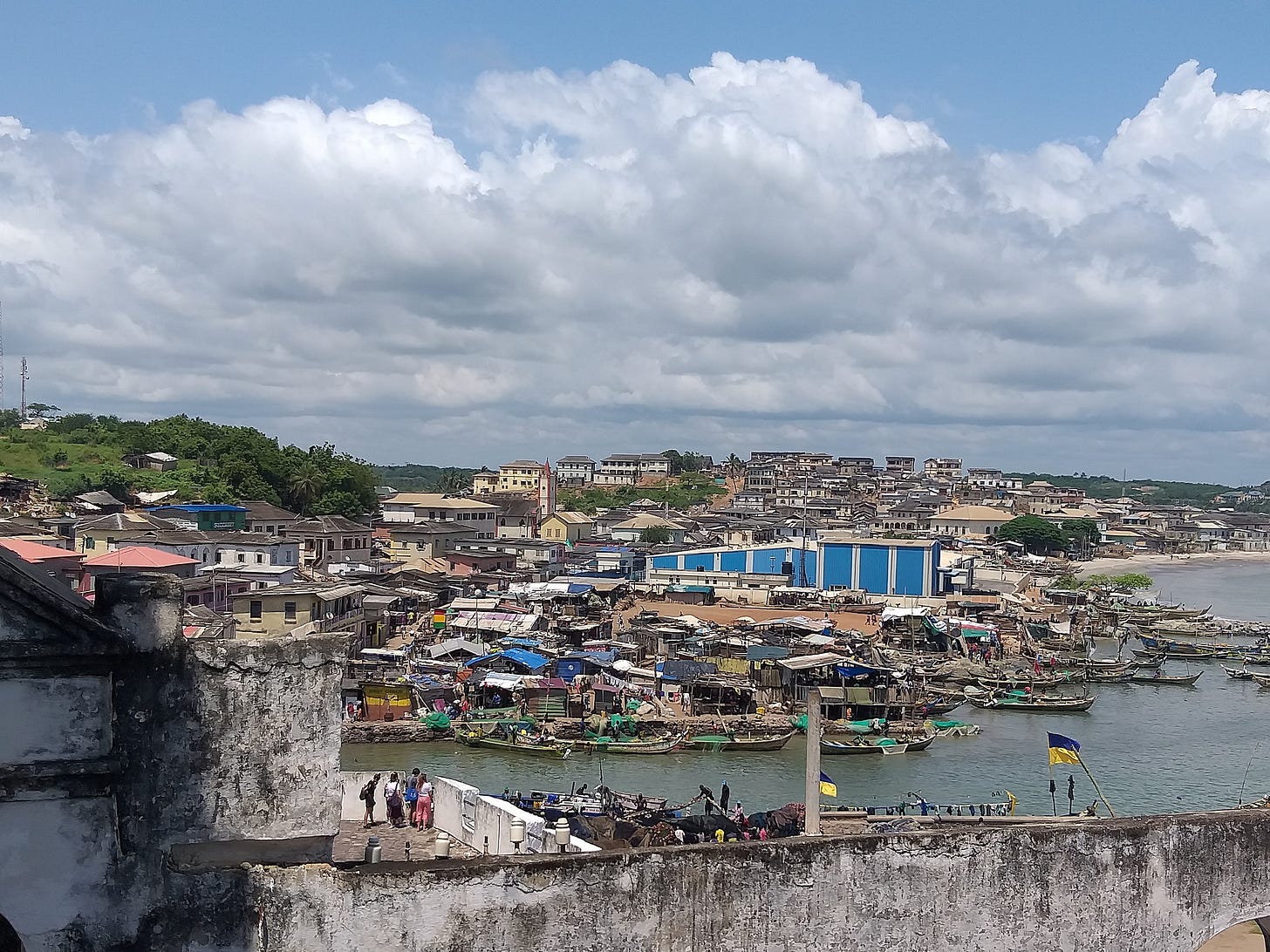
The Gold Coast was a British Crown colony on the Gulf of Guinea in West Africa from 1821 until its independence in 1957 as Ghana.
The first European explorers to arrive at the coast were the Portuguese in 1471. They encountered a variety of African kingdoms, some of which controlled substantial deposits of gold in the soil. The Portuguese built the Castle of Elmina, the first European settlement on the Gold Coast. They acquired slaves and gold in trade for European goods such as metal knives, beads, mirrors, rum, and guns.
News of the successful trading spread quickly, and British, Dutch, Danish, Prussian and Swedish traders arrived, building several forts along the coastline. The Europeans named the coastline The Gold Coast because of the large gold resources found in the area. The slave trade served as the principal exchange while Europeans began to explore and colonize the Americas. Soon the Portuguese and Spanish began to export African slaves to the Caribbean, and North and South America. The Dutch and British also entered the slave trade, supplying slaves to markets in the Caribbean and on the Caribbean coast of South America.
In 1821, the British government seized privately held lands along the coast and incorporated them into the British Gold Coast colony, taking over the local interests of other European countries. They purchased and incorporated the Danish Gold Coast in 1850 and the Dutch Gold Coast, including Fort Elmina, in 1872. Britain steadily expanded its colony through the invasion and subjection of local kingdoms, particularly the Ashanti and Fante confederacies.
The Ashanti people had controlled much of Ghana before Europeans arrived. Today, they continue to constitute the largest ethnic community in Ghana. Four Anglo-Ashanti Wars were fought between the Ashanti and the British, who were sometimes allied with the Fante.
By 1901, the British had established a colony incorporating all of the Gold Coast, with its kingdoms and tribes under a single administration. They exploited and exported a variety of natural resources: gold, metal ores, diamonds, ivory, pepper, timber, grain and cocoa. By the end of the 1940s, the Gold Coast was exporting more than half of the world's cocoa supply.
The Gold Coast colony fought for Britain in both World War I and World War II. From 1914 to 1918, the Gold Coast Regiment fought in battles against German forces in Cameroon and in the long East Africa campaign. In WWII, troops from the Gold Coast served in Ethiopia and Burma.
Nationalistic sentiments in British colonies accelerated after WWII. In 1957, Kwame Nkrumah, a Pan-Africanist educated in the US and UK, led the Colony of Gold Coast to independence as the state of Ghana.
Ghana became the first colony in Sub-Saharan Africa to achieve sovereignty.
Further Reading:
Foreign Policy in Focus - How West Africa Helped Win World War II



